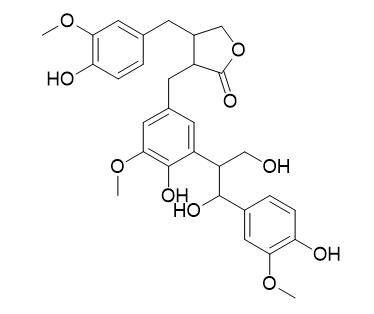Isolappaol C
Reference standards.
Inquire / Order:
manager@chemfaces.com
Technical Inquiries:
service@chemfaces.com
Tel:
+86-27-84237783
Fax:
+86-27-84254680
Address:
1 Building, No. 83, CheCheng Rd., Wuhan Economic and Technological Development Zone, Wuhan, Hubei 430056, PRC
Providing storage is as stated on the product vial and the vial is kept tightly sealed, the product can be stored for up to
24 months(2-8C).
Wherever possible, you should prepare and use solutions on the same day. However, if you need to make up stock solutions in advance, we recommend that you store the solution as aliquots in tightly sealed vials at -20C. Generally, these will be useable for up to two weeks. Before use, and prior to opening the vial we recommend that you allow your product to equilibrate to room temperature for at least 1 hour.
Need more advice on solubility, usage and handling? Please email to: service@chemfaces.com
The packaging of the product may have turned upside down during transportation, resulting in the natural compounds adhering to the neck or cap of the vial. take the vial out of its packaging and gently shake to let the compounds fall to the bottom of the vial. for liquid products, centrifuge at 200-500 RPM to gather the liquid at the bottom of the vial. try to avoid loss or contamination during handling.
Chem. of Vegetable Raw Materials2020, 97-105
Cancers (Basel).2023, 15(1):293.
Int J Mol Sci.2021, 22(10):5181.
J Sci Food Agric.2017, 97(5):1656-1662
Antioxidants (Basel).2021, 10(8):1300.
Chinese Journal of Hospital Pharmacy2020, 40(7)
Food Res Int.2018, 106:909-919
Hum Exp Toxicol.2017, 36(11):1169-1176
ACS Pharmacol. Transl. Sci.2022, 5,7,479-490
J of Food Quality2020, 8851285.
Related and Featured Products
Chemical & Pharmaceutical Bulletin, 2007, 55(1):150-152.
Lignans from Arctium lappa and their inhibition of LPS-induced nitric oxide production.[Reference:
WebLink]
METHODS AND RESULTS:
A new butyrolactone sesquilignan, Isolappaol C (1), together with four known lignans, lappaol C (2), lappaol D (3), lappaol F (4), and diarctigenin (5), were isolated from the methanolic extract of the seeds from the Arctium lappa plant. The structure of Isolappaol C (1) was determined by spectral analysis including 1D- and 2D-NMR. All the isolates were evaluated for their inhibitory effects on the LPS-induced nitric oxide production using murine macrophage RAW264.7 cells.
CONCLUSIONS:
Lappaol F (4) and diarctigenin (5) strongly inhibited NO production in the LPS-stimulated RAW264.7 cells with IC(50) values of 9.5 and 9.6 microM, respectively.
7,2',4'-Trihydroxy-5-methoxy-3-arylcoumarin
Catalog No: CFN95070
CAS No: 1092952-62-9
Price: Inquiry(manager@chemfaces.com)
Oleuroside
Catalog No: CFN95099
CAS No: 116383-31-4
Price: $288/20mg
Macrophylloside D
Catalog No: CFN95113
CAS No: 179457-69-3
Price: $318/10mg
9-Hydroxy-O-senecioyl-8,9-dihydrooroselol
Catalog No: CFN95274
CAS No: 31456-63-0
Price: $318/5mg
3-Oxo-4-benzyl-3,4-dihydro-1H-pyrrolo [2,1-c] oxazine-6-methylal
Catalog No: CFN95293
CAS No: 60026-28-0
Price: $413/5mg
New compound 12 (Rhoifolin analog)
Catalog No: CFN95371
CAS No: N/A
Price: $318/5mg
3'-Hydroxy-5,7,4'-trimethoxyflavone
Catalog No: CFN95396
CAS No: 33554-52-8
Price: $318/5mg
(Z)-3,11-dimethy-7-methylene-9,14-epoxy-1,6,10-dodecatrien-3-ol
Catalog No: CFN95402
CAS No: 1392202-57-1
Price: $318/10mg
Oxytroflavoside E
Catalog No: CFN95464
CAS No: 1391144-84-5
Price: $318/5mg
Rhamnocitrin 3-galactoside
Catalog No: CFN95474
CAS No: 99878-05-4
Price: $318/10mg



